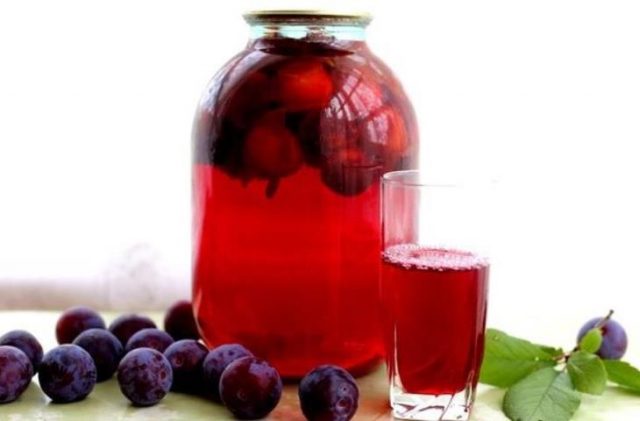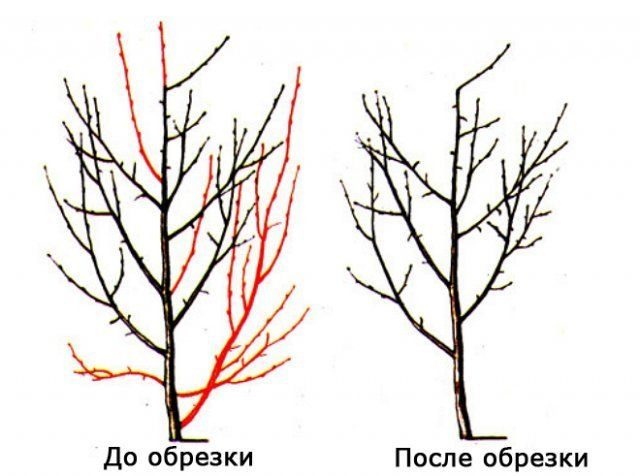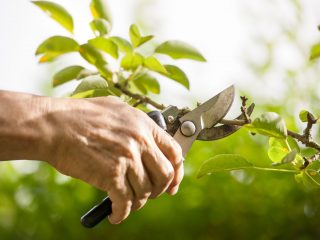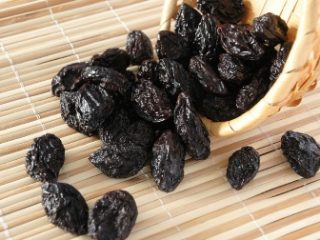Content
Plum grows practically throughout the territory of Russia and Ukraine. The number of new varieties is increasing, and amateurs have the opportunity to taste not small and sour fruits, but large, sweet and even honey plums. Plum Gigantic is the same variety that pleases with its taste, size, and is perfect for compote, jam and pies.
Breeding history of the variety
Plum Gigantic is obtained by crossing two other varieties. Back in the 19th century, the Americans crossed the Hungarian Azhanskaya variety and the Pond Seyanec variety. The name fully justifies the properties of the resulting variety. After all, "Giants" are giants or giants in the Hebrew language. The fruits are large, round and very tasty.
Description of plum variety Giant
The trees are strong. After all, you need to keep large juicy fruits on the branches. Most often they are of medium height and reach 4 meters in height. The crown is thick, wide, reminiscent of a pyramid. The leaves are dark green, the flowers are white and very fragrant. Plums are ovoid and take a long time to mature. The fruit itself is bright red, but it has a waxy coating that gives off blue on thick skin. One fruit weighs an average of 50 grams. They are elastic, and this makes it possible to use them in a very diverse way. High stability during transportation is noted. 1 hectare brings the gardener about 230 centners of plums! The taste depends on the region of germination. Sunny areas give more sweetness. The variety takes root well in the central and southern regions. The flesh is very dense, juicy, does not come off the bone and has a yellow color.
Variety characteristics
Those who want to grow plums with high yields should familiarize themselves with the main characteristics of the Giant variety. For good results, it is important to know about planting plums, tree care and disease prevention.
Drought resistance, frost resistance
The Giant variety is not picky. This is one of the most important advantages. Winters are not terrible, but the warmer, the better the plums. Also do not fear droughts. But in the first years of a plum's life, it will need constant watering. In winter, the plum can survive in a frost of -34 degrees.
Plum pollinators
The Giant variety does not require pollinators. It is not necessary to plant other plums near it. It begins to bloom in late April or early May. And towards the end of August or in the first decade of September, you can pick sweet and juicy plums.
Productivity and fruiting
The Giant variety begins to bear fruit three years after planting. This is a rather short period compared to other plums. During the season, a gardener collects an average of 45 kilograms of plums from one adult tree.
Scope of berries
The Giant variety is unique in that it is used both for the preparation of various dishes and sweets, and for fresh consumption. Plums are sweet and juicy, they allow you to cook delicious compotes, preserves, make marmalade.
Disease and pest resistance
Plum variety Giant is resistant not only to frost. The tree has the ability to resist those pests that easily infect other trees. But it is possible that this variety is also sick, in order to protect it, it is necessary to carry out preventive procedures.
Advantages and disadvantages of the variety
Among the advantages, one can single out high yield, early maturity, taste, portability, unpretentiousness. Drought resistance and frost resistance are at a sufficient level for central Russia, but the indicators are slightly lower than some other varieties.
Landing features
In order for the plum to bring a good harvest, it is important not only to properly care for it, but also to choose a planting site, time, and properly prepare the place. Each variety requires special conditions suitable for itself.
Recommended timing
The ideal planting time for the Giant plum is spring. You need to transplant in April, when the buds begin to bloom.
Choosing the right place
Even before buying a seedling, it is important to determine where it will grow. And here there are several recommendations or even rules. The place should be well lit. The shade results in a small crop. It is advisable to settle the tree near buildings such as a garage, summer kitchen, etc. This is due to the fact that it is important for any variety to grow in warmth, no matter how stable it is. The north side should preferably be closed from the winds. A pit for planting would not be the best choice; you need to choose a hill or an area where there is no stagnation of water. Groundwater should not approach the root by 1.5 meters. The Giant Plum is not as picky about the soil as cherries or cherries.
What crops can and cannot be planted nearby
Each tree has compatibility with others. Some further carry pests, some harm the roots, shade, take all the nutrients from the soil. It is undesirable to plant all varieties of plums next to raspberries, currants, apples and pears. If elderberry and maple grow next to it, then the plum will only get better. This is a real salvation from aphids.
Selection and preparation of planting material
It is important to choose the right seedling. It is worth buying plums in proven places, preferably with documents. The root system is the first thing to pay attention to. It must be developed. It is not recommended to take a seedling without a tag. There should be no stains or damage on a healthy trunk. Height - from 1 meter. Better to take a two-year-old seedling.
Landing algorithm
In order not to damage the seedling and plant it correctly, you need to follow the algorithm:
- A column is dug into the hole, which will be a support for a small tree.
- The pit is fertilized, the soil is poured above the edges of the pit.
- Prepare the seedling, cut off the damage.
- The plum is installed so that the roots do not rest strongly against the walls of the pit.
- Water it carefully so as not to damage the still weak roots.
- At the trunk there are yellowed leaves and straw.
Plum follow-up care
Correct pruning of plums helps to further increase yields, get good big fruits, and protect against diseases and pests. Immediately after planting a young tree, about a third of each branch is cut into the ground. If growth has stopped, then the branch is cut to the older wood. A good time for pruning is early spring, April. This cannot be done in autumn. If a full pruning is carried out, then no stumps are left. If there are a lot of fruits, and they pull down the lower branches, then they should be cut off. There is no need to chase the number of branches, on the contrary, it is important to thin them out, so there will be more harvest. Weak, lethargic and spoiled shoots should not remain on the tree, they are removed. Each pruning procedure is limited to one quarter of the pruned shoots. When the plum has grown by 2 meters, its growth should be limited to increase the number of fruits.
As a top dressing in the spring, use urea, potassium sulfate in quantities of 40 grams. When the plums begin to pour, the substances interfere with 30 grams of each and fertilize. When all the fruits are ripe and fell off, superphosphate is added in the same amount. Nitrogen should not be fed in autumn.
To protect against mice and hares, gardeners use special nets.
The giant plum loves moisture. It takes two buckets of water a day if the tree has already grown.Midsummer is a dry time, and the fruits are poured, so at this moment you need to pay special attention to moisture. In August, watering is stopped.
For the winter period, the tree is covered.
Diseases and pests, methods of control and prevention
Plum varieties Gigantic are often affected by the following diseases:
- Clasterosporium disease.
- Moniliosis, rot.
- Rust.
- Coccomycosis.
- Sooty fungus.
- Root cancer.
- Marsupial disease.
- Milky shine.
- Silkworms are harmful.
- Goldmails.
- Sawflies.
- Hawthorn.
- Fruit moths.
For the prevention and treatment of the tree, gardeners use copper oxychloride, Bordeaux mixture 1%, fungicide. To protect from pests, Nitrofen, Karbofos, Benzophosphate are bred.
Conclusion
Plum Gigantic is one of the best varieties. The tree boasts good winter hardiness, high yields, tasty, sweet and very juicy fruits. In general, the Giant variety is unpretentious, but in order to get a large healthy tree in the future, you need to follow the basic rules of planting, care and prevention of diseases.















